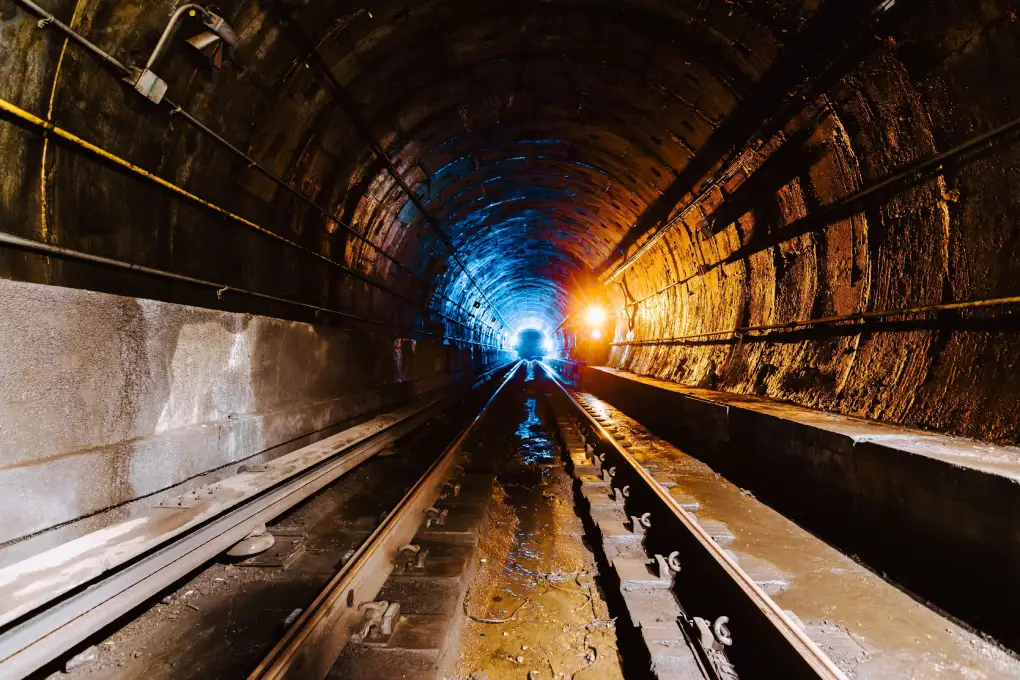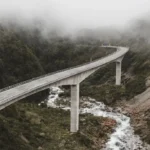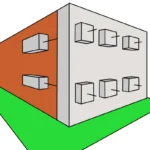What Makes Underground Tunnels Important?

Underground tunnels, often overlooked but of critical importance, play an essential role in modern infrastructure. These ingenious structures overcome geographical obstacles, enhance mobility by providing efficient routes, and foster economic development by connecting previously isolated areas.
One of their key advantages is their ability to significantly reduce travel times and logistical costs by overcoming mountains, rivers, and bodies of water. Moreover, by minimizing surface traffic congestion, they contribute to environmental sustainability by reducing greenhouse gas emissions and air pollution.
Safety and resilience are fundamental in their design, ensuring constant connectivity even in adverse conditions. In summary, tunnels are underground pillars driving economic progress, improving the quality of life, and promoting a more sustainable approach to transportation in modern society.
Some advantages offered by tunnel construction include:
Overcoming Geographical Obstacles: One prominent role of tunnels is their ability to overcome natural obstacles such as mountains, rivers, and bodies of water. Instead of taking long detours or navigating winding roads, tunnels offer direct and shorter routes, reducing travel times and logistical costs for both individuals and businesses.
Improved Mobility: With increasing traffic congestion on roads, tunnels provide a solution to enhance mobility. By providing underground transportation routes, surface roads are decongested, facilitating the movement of vehicles and people. This not only saves time but also reduces stress associated with traffic jams.
Fostering Economic Development: Tunnels not only bring us physically closer but also bring commercial opportunities. By connecting previously geographically isolated areas, new perspectives for economic development open up. Remote regions can become more accessible, stimulating investment and economic growth in these areas.
Safety and Resistance: Tunnels are constructed with a focus on safety and resilience. They are designed to withstand a variety of adverse weather conditions and provide a reliable transportation route even in the worst circumstances. This ensures constant and secure connectivity, regardless of external conditions.
Types of Tunnels


Underground tunnels are built for a variety of purposes, resulting in various types of tunnels based on their function and design. Here are some of their types:
Road Tunnels: These tunnels are built to allow vehicle traffic, such as cars and trucks, to pass through geographical obstacles like mountains or rivers. Road tunnels are essential for reducing travel distance and improving the efficiency of land transportation.
Rail Tunnels: Similar to road tunnels, these are designed specifically for the passage of trains. Rail tunnels enable trains to traverse mountains and other natural barriers, facilitating the transportation of cargo and passengers on railway routes.
Drinking Water Tunnels: These tunnels transport water from natural sources, such as rivers or reservoirs, to areas where it is needed for human or industrial consumption. Drinking water tunnels are lined with waterproof materials to ensure water quality.
Sewage Tunnels: Part of the sanitation system, these tunnels allow the collection and transport of wastewater and rainwater from urban areas to treatment plants or bodies of water, preventing flooding and pollution issues.
Subway Tunnels: These tunnels provide underground routes for public transportation systems like the subway. Subway tunnels are common in densely populated urban areas and allow efficient movement of passengers underground.
Mining Tunnels: Used in the mining industry to access mineral deposits or natural resources beneath the earth’s surface. Mining tunnels are essential for the safe and efficient extraction of mineral resources.
Energy Tunnels: These tunnels house electrical transmission cables and power distribution systems. They enable the transmission of electricity from generation plants to consumption areas, avoiding exposure of cables to adverse weather conditions.
Underground Railway Tunnels: Unlike conventional railway tunnels, underground railway tunnels are located in the heart of cities for metropolitan and suburban train systems, facilitating urban mobility.
Submarine Tunnels: These tunnels traverse bodies of water, such as seas or lakes. They can be used to connect islands with the mainland or to allow the passage of vehicles and trains under bodies of water.
Defense Tunnels: Some tunnels serve military purposes and are used for strategic defense. They can provide shelter, logistics, and communication in conflict situations.
Impact and Environmental Footprint in Tunnel Construction

Subterranean tunnels are true engineering landmarks that have transformed our daily lives by providing safe and efficient transportation routes. However, it is important to understand that the construction of these underground passages is not without environmental consequences. In this post, we will explore how tunnel construction can affect our surroundings and what measures we can take to minimize these impacts.
Alteration of the Natural Environment: Imagine the scale of excavation required to create a tunnel—large amounts of soil and rock are removed to make way for the infrastructure. If not managed properly, this activity can drastically alter the surrounding landscape and destroy natural habitats. Soil erosion and loss of biodiversity are fundamental concerns that must be addressed.
Air Quality: During construction, activities such as drilling and blasting can release particles and dust into the air. Additionally, vehicles and machinery used on-site can emit atmospheric pollutants. These factors can negatively impact air quality in the area, affecting the health of both people and local wildlife.
Responsible Waste Management: Tunnel construction generates a significant amount of waste, mostly excavated rock and soil. It is crucial to manage these wastes properly to avoid waste accumulation and potential contamination of nearby soil and water.
Effects on Water Resources: Tunnel excavation can alter the flow of groundwater and surface water. This can impact nearby bodies of water as well as aquatic ecosystems and access to water for local communities. Careful management of these resources is essential.
Noise and Vibrations: Tunnel construction generates significant levels of noise and vibrations that can be disruptive to both local communities and surrounding wildlife. Adequate barriers and construction schedules must be implemented to minimize these impacts.
Conserving Biodiversity: Tunnels can pose a challenge to local fauna by blocking migration routes and fragmenting habitats. It is essential to implement mitigation measures, such as the construction of wildlife crossings, to help wildlife adapt to these new structures.
Some Famous Tunnels
In the field of engineering, there are works that deserve recognition as they achieve the grandest ideas of humankind. Here are some of these great infrastructures.
Channel Tunnel (Eurotunnel): This is one of the most iconic and famous tunnels in the world. It connects the United Kingdom (England) to France under the English Channel. The Eurotunnel is used for both railway transportation and vehicular traffic, serving as a masterpiece of modern engineering that facilitates connection between the European continent and the UK.
Seikan Tunnel: Located in Japan, the Seikan Tunnel is one of the longest railway tunnels in the world and one of the most well-known in Asia. It connects the islands of Honshu and Hokkaido under the Sea of Japan, providing a vital link for passenger and cargo transportation in the country.
Chesapeake Bay Bridge Tunnel: This underwater tunnel in the United States is one of the most famous tunnels in North America. It connects the cities of Norfolk and Virginia Beach in the state of Virginia under the Chesapeake Bay. Known for its impressive underwater stretch, it holds significance for the coastal region of Virginia.
These tunnels are globally renowned for their innovative engineering and impact on connectivity and transportation in their respective regions. Each of them represents an impressive achievement in infrastructure construction and plays a significant role in the movement of people and goods globally.
Conclusion
Underground tunnels, often overlooked, are crucial elements of modern infrastructure that play an essential role in improving the quality of life and fostering economic progress. Their ability to overcome geographical obstacles, improve mobility, and reduce logistical costs makes them underground pillars benefiting both individuals and businesses alike.
Furthermore, famous tunnels such as the Eurotunnel, Seikan Tunnel, and Chesapeake Bay Bridge Tunnel are outstanding testimonies to human capacity to overcome technical and geographical challenges. These engineering masterpieces not only connect regions and countries but also inspire admiration and demonstrate the importance of innovation in infrastructure construction.
“Underground tunnels remind us that, even when facing seemingly insurmountable challenges, innovation and determination can pave the way to a better future.”







Related
What is Moment of Inertia in Engineering?
Reinforcement Steels
Metal Structures